Ontario Lobelia, Brook Lobelia, Bog Lobelia, Kalm's Lobelia - Lobelia kalmii
|
Lobelia kalmii - Ontario Lobelia, Brook Lobelia, Bog Lobelia, Kalm's Lobelia. Lobelia is a large genus, with around 350 species worldwide; nearly 50 are found in North America. Many of these have an affinity for wetlands; Lobelia kalmii is one of these, classified as OBL - obligate wetland; almost always found in wetlands - greater than 99% probability. It inhabits marshy areas and river, stream, and lake edges. The plants on this page were photographed on a very small (50 by 150 feet) rocky island in the North Channel of Lake Huron in Ontario, Canada, very much a wet area.
Lobelia kalmii (Syn: Lobelia strictiflora) is a northern species, found coast to coast in Canadian provinces from Novia Scotia to British Columbia. In the United States it is also found from the east coast to the west coast in northern states, only as far south as southern Ohio and northern West Virginia in the east, and Washington state in the west. It is classified as Threatened in New Hampshire, Pennsylvania, and Washington.
Found in:
CT, IA, ID, IL, IN, MA, ME, MI, MN, MT, ND, NH, NJ, NY, OH, PA, SD, VT, WA, WI, WV
Leave comments on Lobelia kalmii at this link. | 
Distribution of Lobelia kalmii in the United States and Canada:
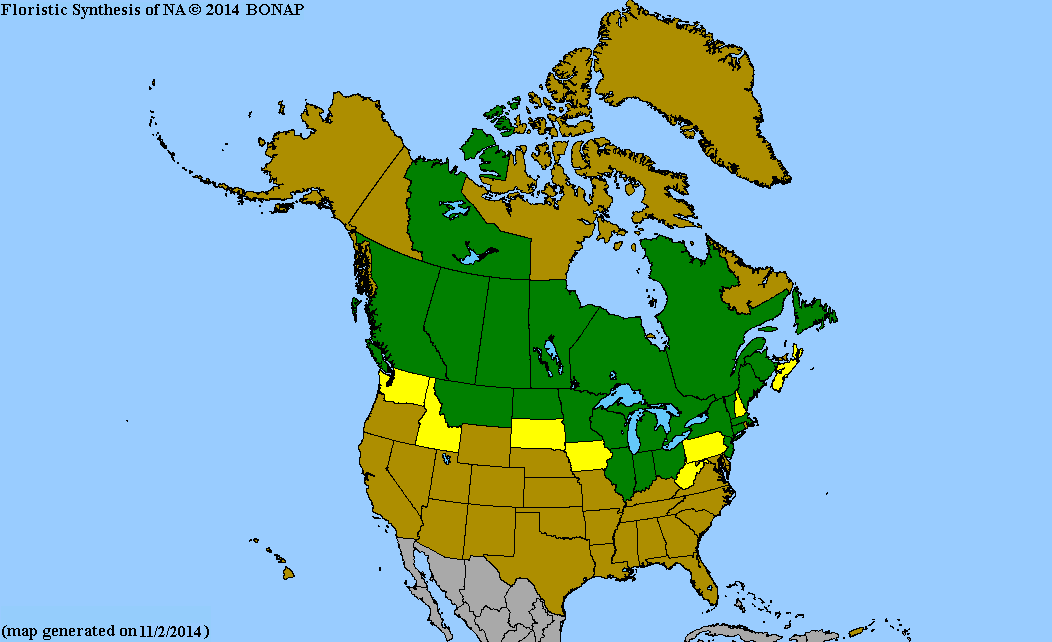
Map courtesy of The Biota of North America Program.
Map color key
Search Our Database: Enter any portion of the Scientific, Common Name, or both.
Do a general Google search of the entire site:
#ad
 Follow USWildflowers on Twitter
#ad
| | Site: Lake Huron North Channel, Ontario, Canada Date: 2015-August-18 | Photographer: Gerald C. Williamson
Nikon D7000
Tamron SP 90MM f/2.8 AF Macro | 19th-century surgeon and botanist William P.C. Barton described the color of the flower of Ontario Lobelia as "pale campanula-purple". I can't disagree with that, but would personally describe it as blue to pale purple. The small blossoms (half inch or smaller) may occasionally be white. They are unmistakably Lobelia-like in shape, with 5 corolla lobes in a bilaterally symmetrical blossom. The lower three lobes form a lower lip, the base of which is white, and I detect a yellow mark within the white patch, although that may not always be present. The plant blooms for about a month from mid-summer to early fall.
The campanulate calyx has 5 relatively large lobes (remember this is a small blossom) which may be green or purplish. The calyx lobes are less than twice the length of the calyx tube, a differentiator from L. erinus, which has calyx lobes more than twice the length of the calyx tube. There are bracteoles near the middle of the pedicels of L. kalmii, missing on L. erinus. | | 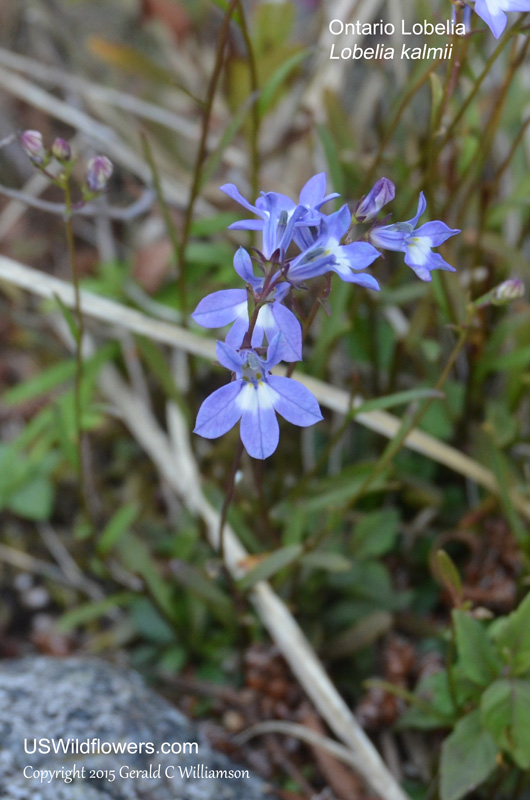
| | Site: Lake Huron North Channel, Ontario, Canada Date: 2015-August-18 | Photographer: Gerald C Williamson
Nikon D7000 | | Ontario Lobelia can grow densely, making lovely color splashes. | | Click on the photo for a larger image
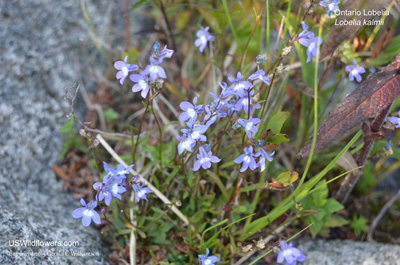
| | Site: Lake Huron North Channel, Ontario, Canada Date: 2015-August-18 | Photographer: Gerald C Williamson
Nikon D7000 | | Lobelia kalmii grows from 6 to about 18 inches high. It is usually unbranching, but may occasionally branch. The branches are terminated with racemes of tiny flowers. | | Click on the photo for a larger image
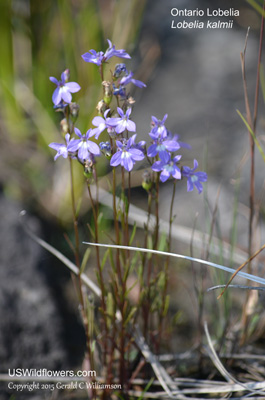
| | Site: Lake Huron North Channel, Ontario, Canada Date: 2015-August-18 | Photographer: Gerald C Williamson
Nikon D7000 | | While the stem leaves of Ontario Lobelia are linear to linear-oblong and rarely more than 1.5 inches long - thus pretty inconspicuous - the basal leaves are longer, wider, and spatulate in shape. Both cauline and basal leaves may occasionally have a couple of shallow teeth in the mid-part of the margins. | | Click on the photo for a larger image
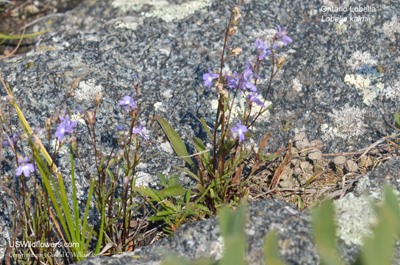
| | Site: Lake Huron North Channel, Ontario, Canada Date: 2015-August-18 | Photographer: Gerald C Williamson
Nikon D7000 | | Here Lobelia kalmii is sharing rare soil with Eupatorium perfoliatum on a tiny mostly-rock island near Turnbull Island at the west end of Whalesback Channel in the North Channel of Lake Huron - Ontario, Canada. | | Click on the photo for a larger image
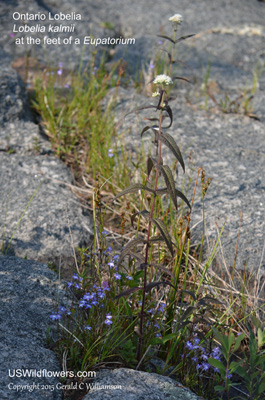
|
References used for identification and information:
|
|
| |
| #ad
|
|







